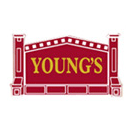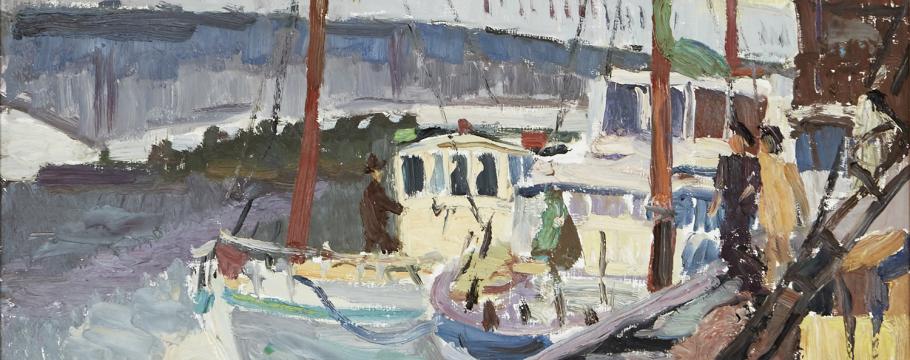
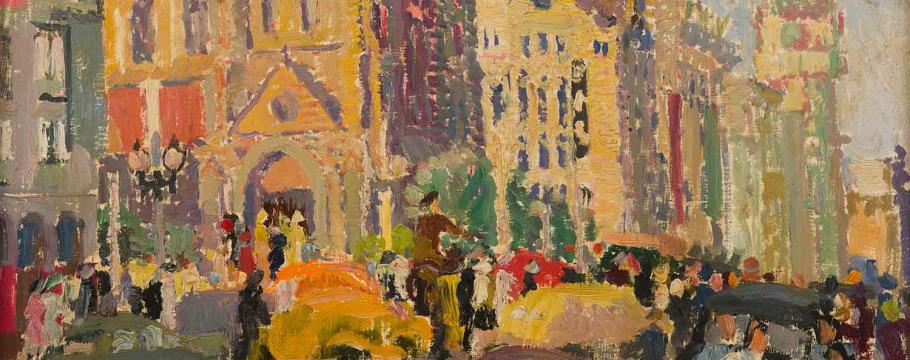
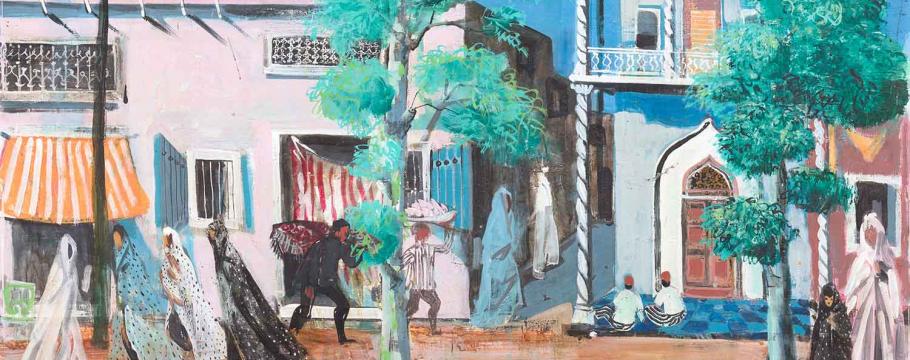
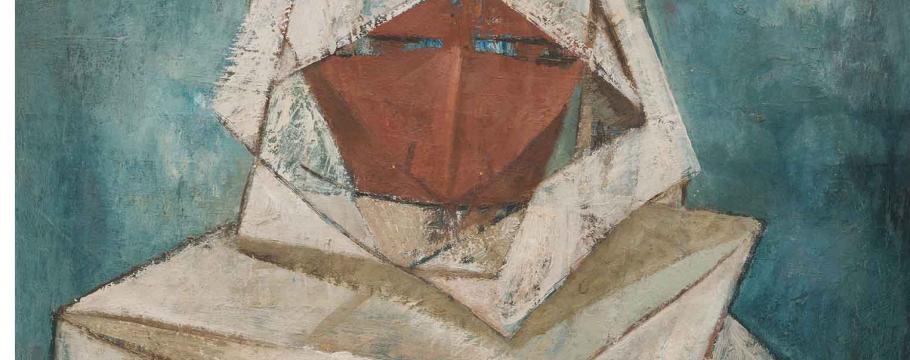

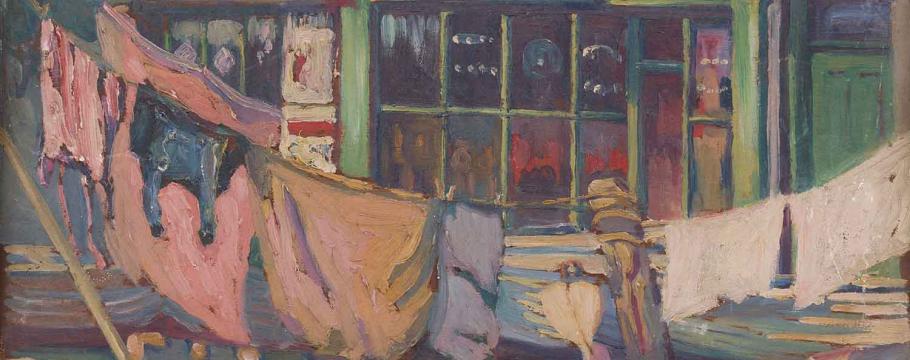

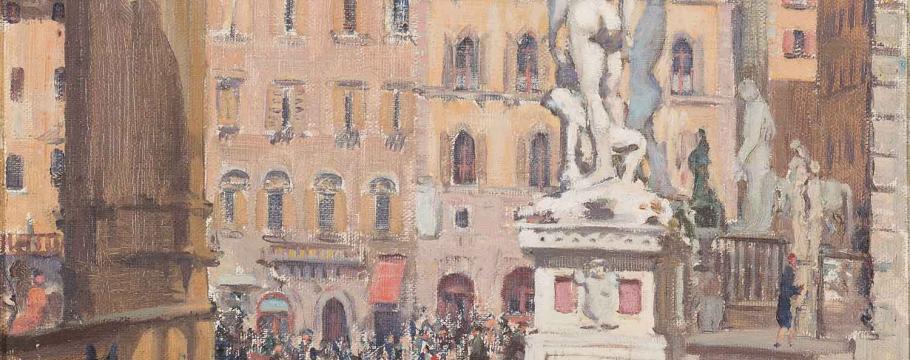
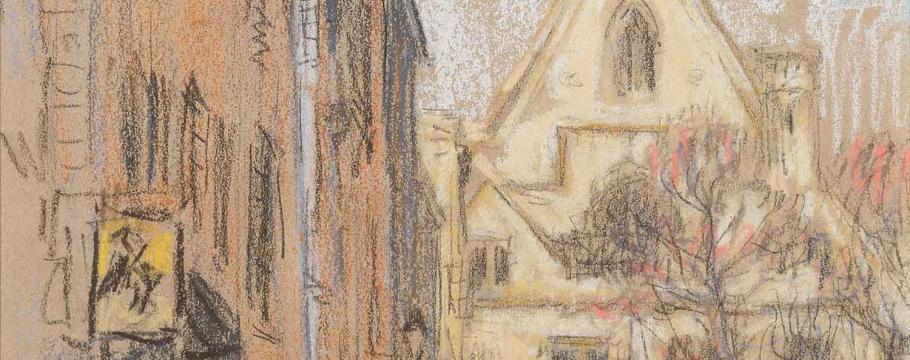
Women artists on their own for first time in Leonard Joel auction
Author: Richard Brewster | Posted: 6th October, 2017
Works by Ludmilla Meilerts will feature strongly at Leonard Joel’s forthcoming first auction devoted only to women artists covering the decades 1900 to 1960.
Meilerts, who lived from 1908 to 1998, fled post World War II Latvia and became a notable Australian artist – a strong testimony to her resilience and determination.
With Fred Williams, she shared fifth prize in Australia’s inaugural 1950 Dunlop Art Prize – with first place going to one of the country’s great modern artists Sidney Nolan.
Meilerts is represented in many Australian private and public collections including the National Gallery of Victoria and Art Gallery of New South Wales.
Her works in the Leonard Joel auction, which begins at 2pm on Thursday October 12 at 333 Malvern Road South Yarra, include Princes Bridge Melbourne and From the Steps of Flinders Street 1950.
Elaine Haxton (1909-1999) is another prominent artist in the auction. An Australian painter, printmaker, designer and commercial artist, she was one of five women artists represented at the Australian Commercial and Industrial Artists Association’s first Sydney exhibition in 1940.
Noted for both her fine and commercial art, Haxton won the 1943 Sir John Sulman Prize (one of Australia’s most famous and longest running art prizes) for a mural at le Coq D’Or Restaurant in Sydney.
Her auction painting Street in Isfahan 1961 was painted as the result of an invitation by Qantas to travel internationally all expenses paid providing the airline could use any two of her resultant drawings for advertisements.
Although this did not happen, Haxton later turned many of her drawings into oil paintings.
Modernist artist Dorothy Braund (1926-2013) is another painter of note. She studied at the National Gallery School in Melbourne and the George Bell School, established by influential modernist George Bell.
Braund exhibited extensively in eastern Australian States and is represented in several public collections including those of the National Gallery of Australia, National Gallery of Victoria and Art Gallery of South Australia.
Throughout her extensive and prolific career, Braund was among a generation of influential women who made a significant contribution to the period.
Persian Nomad 1962 is typical of her work, which is characterised by economy of means, rhythmic tension of line, close colour harmony and subordination of the object.
Collectors also will be interested in Ethel Spowers (1890-1947) linocut 16/50 Wet Afternoon 1930.
Spowers studied drawing and painting from 1911 to 1917 at the National Gallery of Victoria. She returned to London 12 years later to study linocut printmaking at the Grosvenor School of Modern Art, where her style changed dramatically.
Wet Afternoon was exhibited in 1930 in London when the British Museum and the Victoria and Albert Museums acquired impressions.
Another major linocut exhibit is fellow Grosvenor School of Art printmaker Dorrit Black’s (1891-1951) Air Travel 2: Coconut Palms 1947-49.
Inspired by an aircraft trip to northern Queensland soon after World War II, the linocut records the contrasting organic and ordered formation of the natural world as seen from the air.
Other artists to feature include Constance Winifred Honey (1892-1944) London Shopfront, Dora L. Wilson (1883-1946) Snowfall in the Alps and Florence, and Janet Cumbrae-Stewart (1883-1960) European Street Scene.



